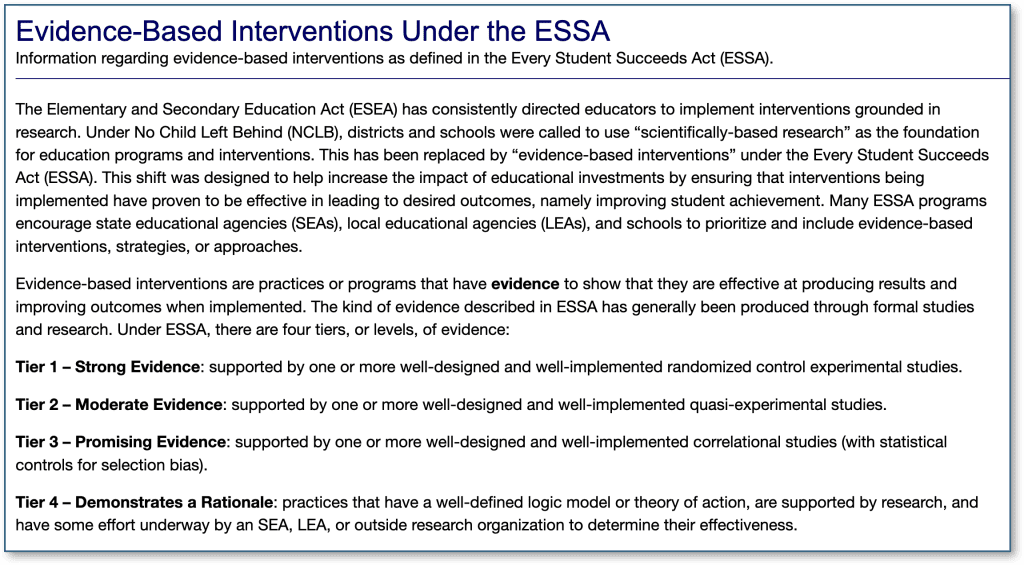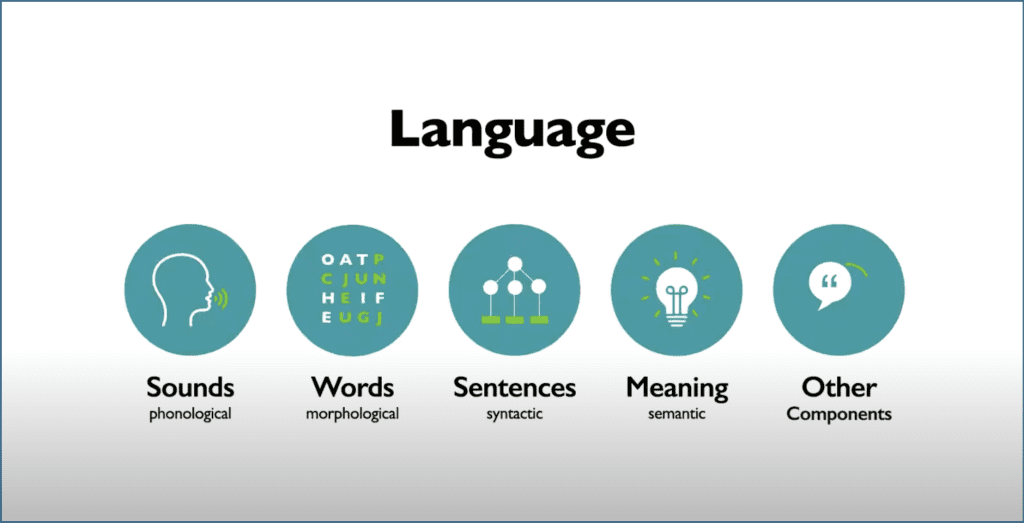Can Dyslexia be Corrected?
Background
Last month, an education publication ran an article with the title: What Educators Need to Know about Dyslexia – and Why It’s Not Something to ‘Fix.’ It reiterates an old assumption about this neurological condition that no longer holds, thanks to technological advances.
Old approach to treating Dyslexia: Dyslexia interventionists and reading specialists help struggling readers compensate and cope with their dyslexia, a reading difficulty.
Basis for the old Dyslexia Treatment Approach
Let me explain why this assumption–that dyslexia is uncorrectable–is not only outdated but detrimental on multiple fronts. I do so in these roles:
- Clinical linguist with 3 decades of fieldwork experience with dyslexia
- Patentee of computing technologies for the diagnosis and therapy of language-related disorders
- Inventor of Dysolve AI that has corrected this learning disability
New approach to treating Dyslexia: Web-based Dysolve AI corrects struggling readers’ dyslexia with customized, generated game activities.
The Dyslexia Debate
Dyslexia is a vital topic for public debate because it affects 1 in 5 people in the general population, or about 20%, making it a widespread issue. In schools, it’s the largest category within special education, where students with dyslexia require tailored support. This contributes to the high cost of special education, which exceeds $120 billion annually for U.S. taxpayers, sparking discussions on how to effectively support these students while managing the significant financial impact on the education system.
Examining Old Assumptions
The assumption that dyslexia cannot be “fixed” comes from these observations:
- Dyslexia is neurobiological
- Dyslexia has never been corrected before
- Brain scans show differences between dyslexic and typical brains in reading activity
- Current interventions cannot clear reading difficulties in students after grade 3
1. Rebuttal One: Dyslexia is neurobiological
The idea that dyslexia is neurobiological challenges the notion it can’t be addressed. While dyslexic and typical brains may initially differ in structure and function, retraining can potentially alter dyslexic brains. Research into neuroplasticity—the brain’s ability to reorganize and adapt—is still emerging, suggesting that with the right interventions, dyslexic individuals might improve reading skills over time, opening new possibilities for effective support strategies.
2. Rebuttal Two: Dyslexia has never been corrected before
- The solution may require new expertise
- The solution may require breakthrough technology
- The solution may require both
3. Rebuttal Three: Brain scans show differences between dyslexic and typical brains
- Brain scans show current states, not future potential
- Neuroscience cannot yet read dyslexia traits in individual brain scans
- The solution may not be found in methods involving physical brain structures

Old approach: Try to identify dyslexia traits in the physical structures of the brain.
New approach: Identify and correct dyslexia traits in the functional structures of the brain.
4. Concurrence: Interventions cannot clear reading difficulties in students after grade 3
Traditional interventions often fail to address reading difficulties in students after grade 3, leaving many struggling readers unable to make progress. Despite the use of popular methods like structured literacy, these students continue to fall behind, even when costly interventions are applied. Meta-analytic reviews of studies further confirm that these traditional approaches show no significant positive effect, highlighting the need for a more effective solution to help students overcome their reading challenges.
Recommended Study Type
Evidence of positive effect should come from studies with these rigorous criteria:
- Replicable experimental study
- Randomized controlled trial – participants are assigned randomly to treatment and control groups
- At least 100 participants (n = 100+)
- Diverse demographics of participants – ethnicity, socio-economic status
Recommended Evidence Type
Evidence of positive effect should come from objective, external measures:
- State reading/ELA assessments
- Standardized reading/ELA assessments
- School-administered reading/ELA assessments
- From the above, scores on broad achievement such as reading comprehension
Instead of the above criteria, many studies use subjective, internal measures designed by the intervention or research teams themselves (teaching to the test).
What Does Evidence-Based Mean?
Based on the definition from the Every Student Succeeds Act (ESSA):
- The intervention method is under study
- The intervention method need not have actual evidence of positive effect

Different levels of evidence defined.
What Do We Truly Know about Dyslexia?
Examining Actual Evidence About Dyslexia After 5 Decades of Research
Dyslexia is a language processing difficulty, evidenced by inefficiencies in how the brain manages linguistic information. Studies show struggles with phonological processing—mapping sounds to letters—leading to challenges in reading. Research highlights slower processing speeds in linguistic tasks, indicating a computational bottleneck Dysolve AI addresses. A six-year study demonstrated significant reading improvements with Dysolve, consistent with evidence that phonological interventions are most effective, reinforcing dyslexia’s basis in language processing issues.
Logical Requirements
A dyslexia solution requires these 3 things:
- Expertise in natural language
- Expertise in language processing in exceptional brains
- A method to identify and correct language processing difficulties in individual brains
1. Expertise in natural language
Linguistics, the science behind how we use language, reveals the intricate layers that make up human communication. It’s a field that breaks down language into several specialized areas, each focusing on a different aspect of how we speak, read, and understand. Here’s a look at some of these key areas:
- Phonetics (speech sounds)
- Phonology (sound patterns)
- Morphology (parts of words)
- Semantics (linguistic meanings)
- Syntax (sentences)
- Psycholinguistics
- Sociolinguistics
- Computational Linguistics
- Etc.
The reality of language processing issues, like those seen in dyslexia, is that they can disrupt any part of this system. This interconnectedness highlights why a comprehensive approach is needed to address challenges in the brain’s language processing abilities.

Components of natural language: phonological, morphological, syntactic, semantic and others
2. Expertise in language processing in exceptional brains
Clinical Linguistics, a specialized branch of Linguistics, focuses on understanding exceptional languages and how they function in unique brains. This field dives deep into the nuances of language processing, exploring how deviations from typical language use can reveal critical insights about the brain’s capabilities. Exceptional languages comprise these:
- Verbal behaviors outside the typical
- Verbal outputs outside the typical
- Non-typical may include the gifted or talented
- Non-typical may include disabilities or disorders
3. A method to identify and correct language processing difficulties in individual brains
I describe below the obstacles and the approach to overcome them.
Obstacles to a Dyslexia Solution
A Definition Problem
Dyslexia continues to pose a significant challenge because it lacks a clear, universally accepted definition that researchers can agree on. This absence of consensus creates confusion and hinders progress in understanding the condition fully. Without a precise and standardized definition, efforts to develop effective interventions and solutions remain fragmented, making it difficult to address the root causes of dyslexia. Precision in defining the condition is therefore essential to unlocking a pathway toward a solution.
Dyslexia Defined
Approach:
- Define “difficulties” in a precise, measurable way
- Define “difficulties” as “inefficiencies”
- Target is 100% efficiency in language processing in the brain
Method Required
The capability to measure processing inefficiencies in individual brains in a way that is:
- Convenient
- Easy
- Inexpensive
- Non-invasive
Technical Requirements
- Analyze billions of datapoints per person, given the complexity of the linguistic system and language processing in the brain
- Operate at the rapid speed of language processes, which often occur in hundreds of milliseconds
- Measure sub-second changes in language processing to track improvements
- Perform (1)-(3) at scale for the diversity of individuals with different scope and severity of processing inefficiencies
Given the technical requirements above, no human specialist can clear dyslexia. But an AI expert system can.
Technical Requirements Met
Dysolve AI was custom-built to meet the above requirements. The results are clear in Dysolve AI’s ability to treat dyslexia:
- Dysolve AI has corrected dyslexia in individuals since 2017.
- In 2024, 12 former Dysolve users reported to the press the end of their reading difficulty
- Pre-Dysolve, many struggled for years with reading despite using various other interventions
- Post-Dysolve, they functioned like their typical peers academically
- NBC Nightly News featured one of these successful cases in 2024
What Educators Really Need to Know About Dyslexia
The Dyslexia Crisis
Educators need to understand that dyslexia is a:
- Reading crisis
- Language development crisis
- Economic crisis
- Staffing crisis
1. Reading crisis
The reading crisis in education has reached alarming levels, with significant challenges persisting over time. Historically, two-thirds of students have consistently failed to meet reading standards when tested in grades 4, 8, and 12, indicating a deep-rooted issue in literacy development. Despite intensive intervention efforts at federal, state, and local levels, these initiatives have failed to produce meaningful improvements in reading outcomes. Compounding the problem, the post-COVID era has seen reading achievement plummet to its lowest point in 20 years, highlighting the urgent need for effective strategies to address this ongoing crisis.
2. Language development crisis
The language development crisis has significantly impacted young children, particularly during the pandemic when critical language development stages were disrupted. Recent studies have been investigating the negative effects of this disruption, revealing a concerning decline in language skills among children, which underscores the urgent need for targeted interventions to support early language development and mitigate long-term consequences.
3. Economic crisis
School districts across the United States are grappling with a severe economic crisis, historically facing a $10 billion shortfall in special education revenue. In states like New York, Connecticut, Massachusetts, and Pennsylvania, the cost of educating a student with dyslexia using traditional methods is twice that of a typical classmate. Meanwhile, states like Texas that attempt to provide special services to more students with dyslexia, often face multi-billion dollar deficits annually. As a result, school districts are forced to make cuts in other areas of their education budgets and, in some cases, raise school taxes to cover the financial strain, further exacerbating the economic challenges.
4. Staffing crisis
The staffing crisis in education is compounding the challenges of addressing students’ language processing difficulties, as outlined in the technical requirements. Teachers are tasked with differentiating instruction to meet students’ diverse learning needs, which requires specialized skills and resources. Additionally, they must cover the extra work created by unfilled teacher vacancies, leading to increased workloads and burnout, which further hinders the ability to provide effective support for students with dyslexia and other learning challenges.
Groups Affected
Using resource-heavy, ineffective methods hurt these groups:
- Struggling learners and readers in grades K-12 who receive these supports
- Struggling learners and readers in grades K-12 who are denied supports due to cost
- College-age students who cannot qualify for higher education
- Struggling adults who have to endure a lifetime of hardship
- Struggling adults who end up in prison, where 50% have learning disabilities
- Struggling residents on fixed income who cannot afford rising school taxes to pay for more special education
The impact on these groups has been conveyed to our team repeatedly in the course of our work on dyslexia. We heard from all quarters following the NBC Nightly News feature just before last Christmas. Their stories of struggle compel us to speak up, rather than let incorrect assumptions prevail, especially when the cost to individuals and society is so unbearably high.



